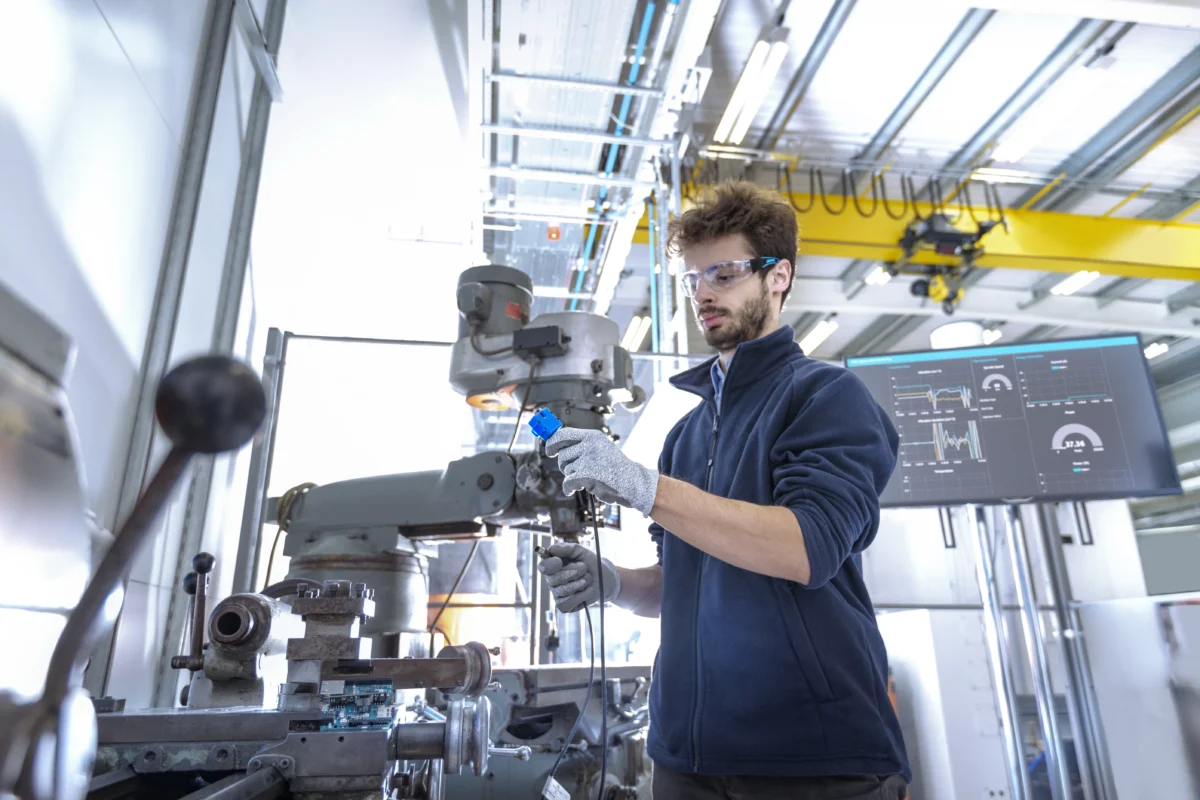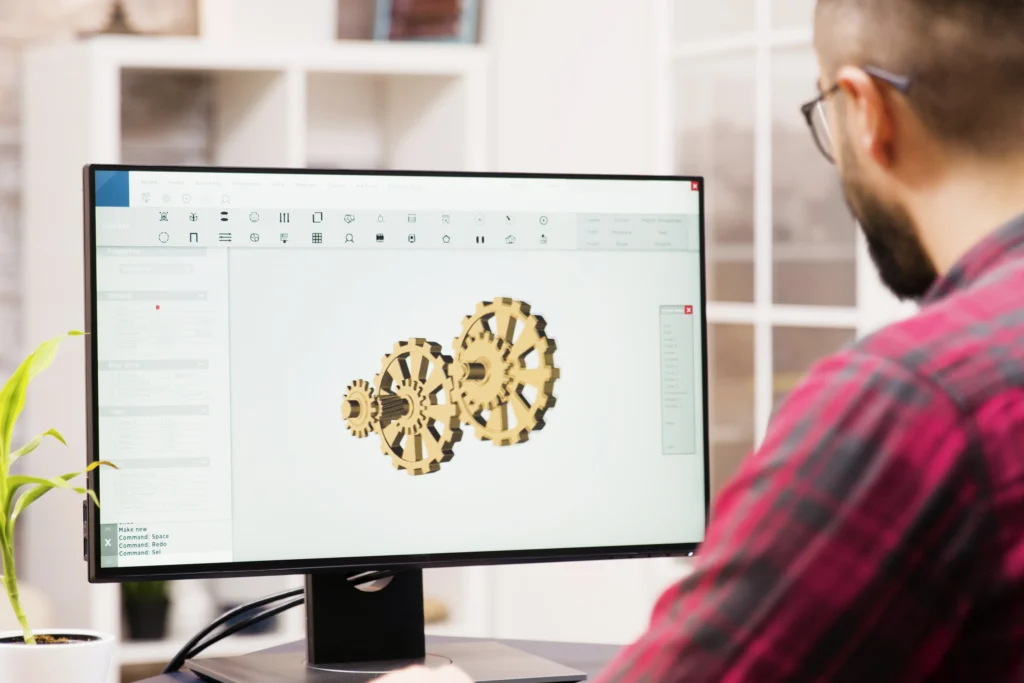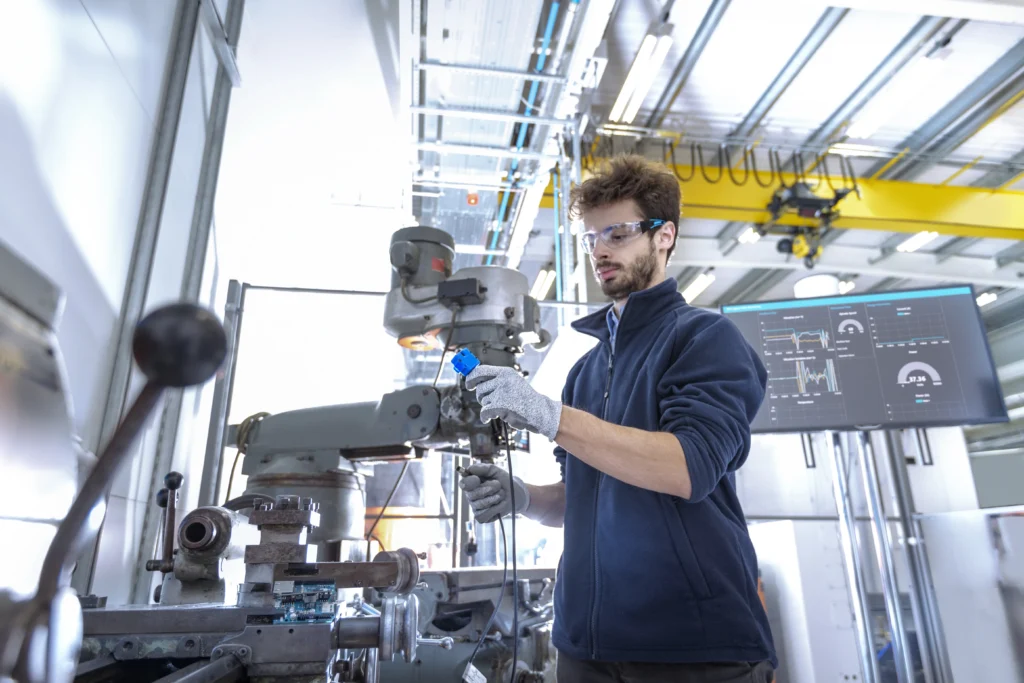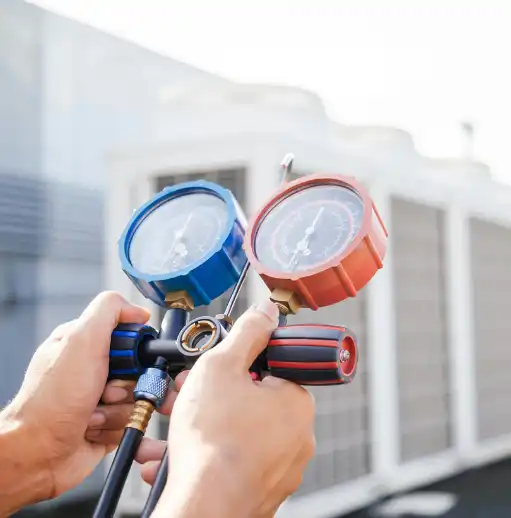
Since their inception in the aerospace sector, leaders across sectors have been finding new ways to leverage the range benefits of digital twins, pushing boundaries, and transforming workflows in manufacturing, healthcare, and energy sectors. In fact, according to research by Fortune Business Insights, the global digital twin market is projected to grow from $17.73 billion in 2024 to $259.32 billion by 2032, at a staggering compound annual growth rate (CAGR) of 39.8%. IoT Analytics also reported that 29% of global manufacturing companies have either fully or partially implemented their digital twin strategies — a significant increase from 20% in 2020.
The workplace is no different, with organizations implementing digital twins for new enterprise-side efficiencies
A brief history of digital twin technology
The origins of digital twin technology are in aerospace, where designers and engineers used it to create virtual models, removing the need for costly and time-consuming physical prototypes.
A digital twin is “a virtual representation of a physical asset that spans its life cycle, from design and manufacturing through operation and maintenance.” At the core idea of digital twin technology is its ability to mirror the entire existence of a physical asset in the virtual realm.
In recent years, digital twin technology has experienced a rise in popularity, extending its reach beyond the aerospace industry and into a myriad of other sectors, including manufacturing, healthcare, and energy.
The latest digital twin trends
“We see digital twin adoption in all kinds of organizations,” said Benoit Lheureux, Gartner’s research vice president, in a past press release. “However, manufacturers of IoT-connected products are the most progressive, as the opportunity to differentiate their product and establish new service and revenue streams is a clear business driver.”
Gartner isn’t alone. As we reported in our “2023 Workplace Predictions: 5 Worktech Trends to Watch” paper, interest in facilities optimization and more predictive analytics has resulted in increased intent to spend on digital twins, according to Verdantix. Over a third (31%) of organizations plan to invest in it over the next 12 months. Similarly, over a quarter (26%) of organizations are already using predictive analytics (including digital twins) extensively and one-fifth (20%) are using it to some limited extent.
Industrial manufacturing stands out as a sector capitalizing on the potential of digital twins. By leveraging digital twin technology, manufacturers gain access to real-time data and insights that optimize production processes, minimize downtime, and enhance overall operational efficiency. The technology empowers manufacturers to simulate and test various scenarios virtually, enabling them to make informed decisions and identify potential bottlenecks before they impact production.
North America currently dominates the digital twin market due to early adoption and significant investments in technology infrastructure. However, Asia-Pacific is projected to witness the highest growth rate in the coming years, driven by the increasing adoption of digital twin technology in manufacturing, healthcare, and energy sectors. Europe also presents substantial growth opportunities, as industries recognize the potential of digital twins to drive innovation and competitiveness.
Digital twins in the real world
A prime example of digital twin technology in consumer goods manufacturing is Unilever PLC. According to TechBlocks Now in a May 2024 LinkedIn Newsletter, the company leverages digital twins of its manufacturing sites to bring more efficiency and flexibility to the overall production process. At each factory unit, the IoT sensors feed data like temperature and motor speed to the cloud, while an IoT digital twin stimulates what-if scenarios to determine the best operational scenarios through machine learning algorithms and advanced data analytics, helping the company use materials and equipment elements more accurately. This has assisted the company in eliminating waste from products that don’t meet quality standards.
In January 2023, two of Unilever’s site’s — in Tianjin, China and Indaiatuba, Brazil — were awarded Lighthouse status by the World Economic Forum. This acknowledges their integration of the latest technologies to increase productivity, efficiency, and sustainable practices.
The Indaiatuba site is home to the largest laundry detergent powder factory in the world and perfectly illustrates the massive impact of digital twin and AI technology when done well. As stated in their press release: “The process used in the manufacturing of laundry powders is highly complex, so making changes is time-consuming. The team set up a digital twin which uses machine learning to predict the optimal process parameters for new formulations. This eliminates the need for physical trials, significantly speeding up the launch of new innovations such as our first anti-residue detergent.”
How does a digital twin work?
Born out of digital modeling, such as computer aided design (CAD) and building information modeling (BIM), digital twinning can deliver important business intelligence because of the ability to layer in data from different systems to gain a better understanding of what is happening or what could happen.
As data becomes increasingly open to sharing within other systems, it’s not hard to imagine the role more advanced modeling like digital twinning will play. What’s more, many organizations now have some of the most powerful computational systems at the ready with cloud technologies that can be purchased as monthly subscription services. But ultimately, what a digital twin is used for goes well beyond a visual representation.
“Very often, parallels are drawn between digital twins and 3D modeling based on their user interface and visualization,” writes Pragya Sharma in a blog post for Parametric Architecture. “However, what distinguishes them is the factor of data. While 3D modeling is limited to providing a view of an object, digital twinning provides a view and real-time data of the object. Digital twins go a step further in exploring how various environmental conditions will impact the object over a period of time.”
“However, what distinguishes them is the factor of data. While 3D modeling is limited to providing a view of an object, digital twinning provides a view and real-time data of the object. Digital twins go a step further in exploring how various environmental conditions will impact the object over a period of time.” — Pragya Sharma, Construction and Technology Writer
What a digital twin is used for and its benefits
The true value of a digital twin is in its application of using data sets across industry and operational disciplines. Companies can eliminate planning and operational blind spots by making it easier to connect asset and facilities data — enabling users to explore, locate, interact with, and report on space and asset data that was previously difficult to access.
Fully integrated digital twins will allow companies to:
- Model short-, mid-, and long-term what-if scenarios and conditions
- Quickly create and automate trend, threshold, and rule-based actions
- Gain faster time to value from data-informed decisions
- Lower asset costs from better inventory pattern recognition
- Lengthen asset life cycles
- Cut down on energy usage
Within the context of smart buildings, intelligent office spaces, and digitally connected commercial real estate portfolios, digital twins offer more efficient and effective space planning and optimization. And it will help workplace strategists and facility managers more easily adapt to rapidly changing economic or environmental conditions, reducing risk and costs from frequent office changes and dynamic hiring patterns.
Ultimately, digital twins support better, faster decision-making
A digital twin in an operational facility management context is a real opportunity to improve day-to-day operations by boosting the quality of services from fact-based decisions. Models provide visual representation. Digital twins make situations real and actionable.
And in the workplace, there are several key areas where digital twins can make an impact thanks to their ability to offer an abundance of context for workplace data:
- Space management and asset management:
For example, booking data shows Conference Room 402 at a utilization rate of 60%, with an average room reservation time of one hour. Floor sensor data aggregated by the digital twin might show that, despite an average one-hour booking time, employees typically only remain in the room for 45 minutes. There’s a period of roughly 15 minutes of dead space, when the room shows occupied but there’s no one in it. The real utilization rate is closer to 45%. Context from the digital twin can help the facility manager optimize the room booking process.
- Lease management:
Use digital twins to set an alert nine months before a property’s lease ends. This advanced notification creates a window of time to consolidate square footage, change your office density, or terminate the lease.
- Move management:
Space planners can collaborate and provide real-time input instead of exchanging hard-copy drawings and combining the data. You can retrieve an exact count on any floor at a glance. You can then explore different allocation options with a few keystrokes.
What’s important to note is the benefit of a digital twin in helping facility managers see what works, what doesn’t and what the best outcome is for optimizing space.






